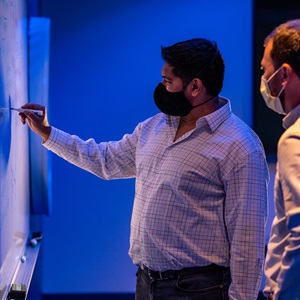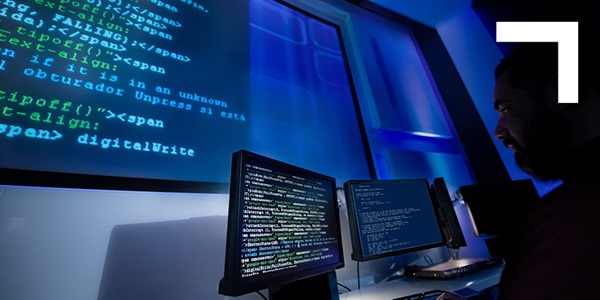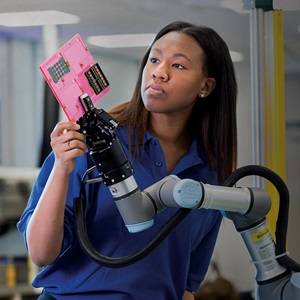Aquatic Agility
Repurposing Wastewater as an Ultra-Pure Resource
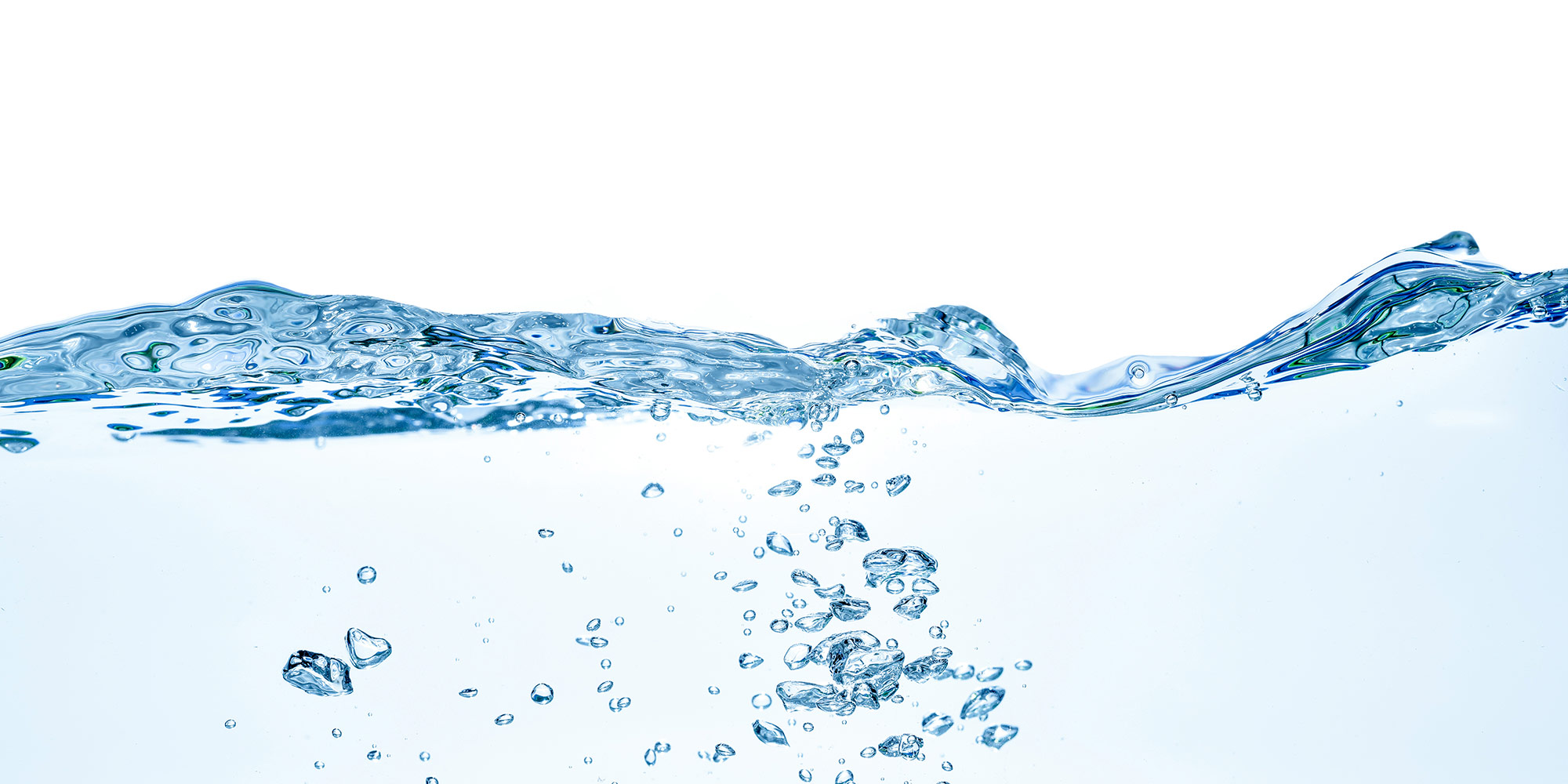
By Scott Cahoon
How clean is clean enough? When it comes to microelectronics manufacturing, there's always room for improvement. Helping to solve this clean sweep concern is ultra-pure water (UPW) —water that has been completely deionized to remove any potential contaminants.
But purity comes at a price. For Northrop Grumman's Advanced Technology Laboratories (ATL) near Baltimore, Maryland, reducing potable water usage and limiting the amount of wastewater created by its manufacturing processes was an ongoing challenge. In support of the company’s 20% potable water reduction goal and recognizing the potential reuse opportunity, a new, state-of-the-art ultrapure water plant and wastewater reclamation system is projected to save at least 33 million gallons of water per year.
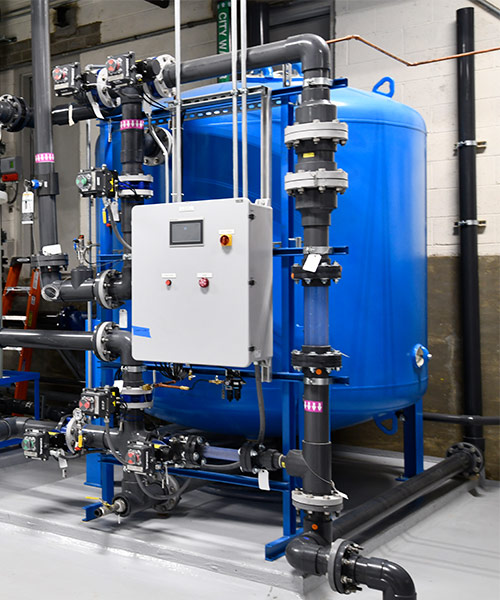
Tapping the Ultra-Pure Potential in Wastewater
As director of engineering John Monk notes, clean water “is critical to our ability to make microelectronics. It is used for all wet processing, working with acidic or basic chemicals, etching materials and, in some cases, depositing materials such as when plating metal.” The use of UPW makes it possible for ATL to create some of the world's most advanced microelectronics, including key technology infrastructure for projects such as the James Webb Space Telescope and the APG-81 and APG-83 radars.
But “clean” isn't enough; water must be ultra purified to remove any trace of chemical or mineral contamination. To streamline the process and ensure UPW is always available on-demand, Northrop Grumman recently replaced an on-site deionization plant capable of treating municipally supplied water and turning it into UPW. However, as production output ramped up, so did the amount of potable water used and the amount of wastewater created. To help improve efficiency and reduce total potable water usage, Facilities, Environmental Health and Safety (EHS), and UPW plant operators and engineers began looking for ways to reduce water consumption without impacting operational throughput. The solution? Resource repurposing.
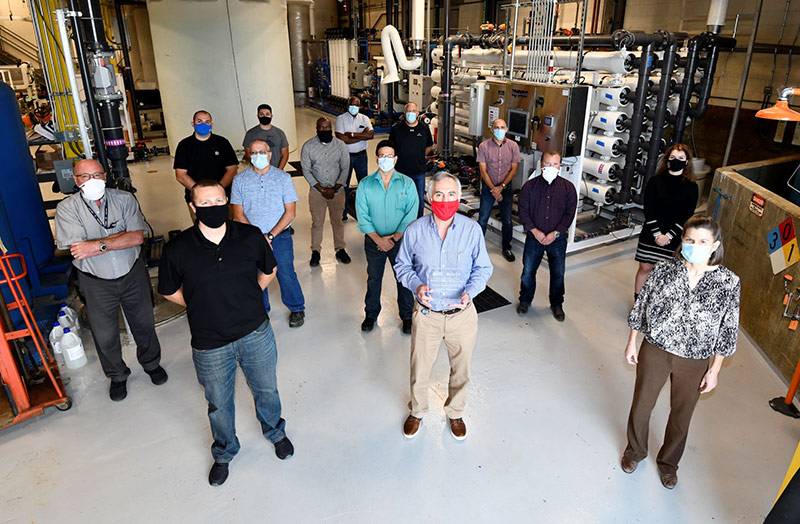
Water, Water Everywhere
Water is water, right? Not quite. In the case of potable drinking water, dissolved minerals and chemicals are absorbed by humans to benefit bodily functions. In the case of microelectronics manufacturing, those same organic and inorganic materials can create critical defects or unexpected electric currents that render the products being made unreliable at best and useless at worst.
The same is also true in reverse. While Scientific American notes that the negative charge of water molecules in an ultra-pure state make them a “super cleaner” given their ability to capture even the tiniest specks of dirt or debris, UPW would be terrible as a thirst-quenching beverage since, as the SA piece puts it, “If you were to drink ultra-pure water, it would literally drink you back,” sucking out valuable chemicals from saliva. Not a great choice.
And just as consumed drinking water is converted into waste by the human body, so too is UPW as it is used in the manufacturing process and discharged to the local municipality. To help reduce total resource use, the EHS team first reached out to the deionization plant's operations team and then, in 2016, contracted Stantec to conduct water use assessments. These were “designed to identify cost-effective water conservation measures and provide rough order of magnitude cost estimates for conceptual opportunities identified by Stantec and the site personnel,” according to environmental sustainability program lead Mike Ensor.
The results were clear: The greatest potential savings came from the addition of secondary treatment process that could repurpose used UPW as supply water for the deionization plant.

Reduce, Reuse, Repurpose
“When I suggested reusing the wastewater, they jumped on the idea,” said Lou Yannone, the plant's chief engineer. But the path to repurposed UPW wasn't easy. The original deionization plant was nearing its end of life in 2018, so the team decided to double up and combine the two efforts into a single new plant. However, as Monk notes, “It was critical that they proved to everybody that the water quality was still the same before we made any changeovers — and we are measuring some things in the parts per billion category.”
After confirming that the content of the repurposed and treated resource met or exceeded the original supply water quality, the team was free to move forward with redevelopment, but according to Yannone, “It was very, very high pressure because what we were doing could potentially shut down the labs, which was the last thing we wanted to do.”
The team decided on a phased approach that integrated pieces of the new system one by one to keep the old plant operating even as new infrastructure was built. Facilities engineering manager, Jack Leek noted the magnitude of this effort. “From research to design to demolition and implementation, the team leveraged a systems thinking approach to anticipate any and all impacts resulting from the multi-staged project.”
The project took more than two years from design to completion. “Every meeting, design review, equipment tie in, and control point was designed to ensure we continue to deliver the highest quality of water to the labs” said equipment engineer Jeff Shapanka. In April 2020 the new deionization plant and wastewater reuse system was fully operational. Today, ATL operates at almost a 50% reuse rate, meaning half of each gallon is repurposed and retreated for use in ATL.
The results speak for themselves. In its first six months of operation, the new plant saved 16.5 million gallons of water, and Northrop Grumman's efforts were recognized with the California Industrial Environmental Association's 2020 Environmental Excellence Award.
Yannone neatly sums up this new, repurposed resource reality: “Right now, the plant is running the best it has since we began.”
More innovation stories
Read all stories about advanced technology and innovation >>
